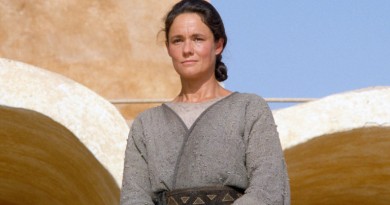Hyperspace Theories Episode 23: Rian Johnson Storytelling Camp
 This month on Hyperspace Theories we consider the qualities that director and screenwriter Rian Johnson brings to Star Wars for Episode VIII, and the lessons gleaned from recent episodes of Star Wars Rebels about the balance between world-building, premise, plot, and character development in storytelling.
This month on Hyperspace Theories we consider the qualities that director and screenwriter Rian Johnson brings to Star Wars for Episode VIII, and the lessons gleaned from recent episodes of Star Wars Rebels about the balance between world-building, premise, plot, and character development in storytelling.
First, though, we begin with a Spoilers Beware! segment. Following up on last month’s episode and our reactions to the theatrical trailer for Rogue One, we share our thoughts on the additional information revealed by the latest stages of the marketing roll-out for the film. These include several international trailers and U.S. television commercials, as well as backstory information in the newly released novel Catalyst, a precursor story to the movie.
In our meta segment on speculating wisely, we’ve previously discussed a wide range of individuals who have influenced Star Wars storytelling, from George Lucas and Dave Filoni to Kathleen Kennedy and J.J. Abrams. This month we speculate about the impact of Rian Johnson, whose Star Wars film remains a year away. We consider his first three major films, each of which is a very different tale: the detective-story inspired Brick (2005), the con-men caper The Brothers Bloom (2008), and the sci-fi time-travel thriller Looper (2012). The impressive list of well-known actors who’ve worked with Johnson on these movies, all three of which he both wrote and directed, also is a testament to his talent and rapport with his cast and crew. In addition, he directed the third-to-last episode of Breaking Bad, titled “Ozymandias,” which is acclaimed as among the best television episodes ever made.
 In sharing reactions to Johnson’s appearance onstage at the Future Filmmakers panel at Star Wars Celebration Europe in London in July, we also considered the importance of the movies he mentioned as influences on his creative process for Episode VIII. The movies included in Johnson’s “film camp” recommendations are:
In sharing reactions to Johnson’s appearance onstage at the Future Filmmakers panel at Star Wars Celebration Europe in London in July, we also considered the importance of the movies he mentioned as influences on his creative process for Episode VIII. The movies included in Johnson’s “film camp” recommendations are:
- Gunga Din (1939)
- Sahara (1943)
- Twelve O’Clock High (1949)
- The Bridge on the River Kwai (1957)
- Letter Never Sent (1960)
- Three Outlaw Samurai (1964)
Just as George Lucas often pointed to specific classic films as inspiration for his Star Wars movies or The Clone Wars episodes, Johnson too draws on sources both famous and obscure to feed his muse.
This month we combine our world-building and storytelling segments for our analysis of the strengths and weaknesses of the four most recent episodes of Star Wars Rebels. We have high praise for “Hera’s Heroes” and “The Last Battle” for weaving great character development moments into their plots, and even amid the extensive fanservice in the latter. On the other hand, the two Sabine-centric stories, “The Antilles Extraction” and “Imperial Super Commandos,” struggled with letting plot and exposition dominate, without offering much insight into the central protagonist of the pair of episodes. We then expand the discussion to other aspects of Star Wars storytelling, including Rogue One.
Related Links:
- Star Wars: Catalyst Book Review by Kay
- The Psychology of Dream Analysis, a short film by Rian Johnson (Vimeo)
- Star Wars Celebration 2016: How 6 Movies Might Shape Star Wars: Episode 8 (IGN)
- Analysis: Letter Never Sent, and what it might mean for Episode VIII (Journal of the Star Wars)
Contact Information:
- Hyperspace Theories: Twitter @HyperspacePod
- Tricia Barr: Twitter @FANgirlcantina; email Tricia@fangirlblog.com
- B.J. Priester: Twitter @RedPenofLex; email Lex@fangirlblog.com
- Kay: Twitter @Geek_Kay; email Kay@fangirlblog.com
- Hyperspace Theories: SKELETON CREW Ahoy! - December 29, 2024
- Hyperspace Theories: WICKED Part I Rises to the Moment - December 6, 2024
- Columbia’s Vader™ Collection Launches Dec 5 - November 27, 2024










